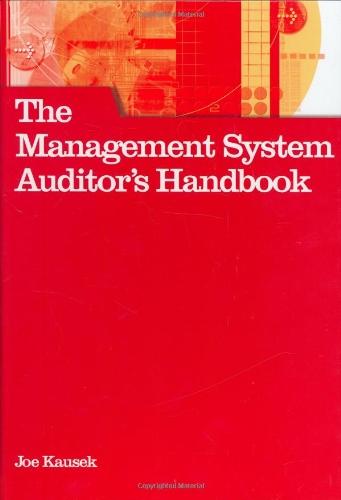Question
1. The total cost of a long-term investment in bonds includes the total amount to acquire the investment, including brokerage fees and other costs incidental
1. The total cost of a long-term investment in bonds includes the total amount to acquire the investment, including brokerage
fees and other costs incidental to the purchase.
True
False
2.When completing the statement of cash flows the total of the net cash flows from the three major classifications of Operating, Investing and Financing activities should equal:
| The change in net asset balances for inventory and property, plant and equipment. | ||
| The net increase (decrease) in cash from the beginning of the period to the end of the period. | ||
| The sum of cash inflows from operating, investing and financing activities. | ||
| The sum of outflows from operating, investing and financing activities. |
3.
The most widely used method of preparing the statement of cash flows is the direct method.
True
False
4
The financial statements of a company are the management's and NOT the auditor's. If the auditor objects to the information that management is presenting because GAAP is violated, then an exception can be issued by the auditor, BUT ONLY if management approves the issuance of an exception. Otherwise a clean, unqualified audit opinion must be issued.
True
False
5
Interim reports are unaudited financial statements normally prepared four times a year. Interim balance sheets are often NOT
provided because this information is not deemed crucial over a short period of time; the income figure has much more relevance to
interim reporting.
True
False
6
The statement of cash flows provides which four key information items to creditors, stockholders, investors, etc.
| a 1. Ability to generate future cash flows. 2. Ability to issue more common stock. 3. Cash and noncash investing and financing transactions during the period. 4. Reasons for the difference between net income and net cash flow from operating activities. | ||
| b.1. Ability to generate future cash flows. 2. Ability to pay dividends and meet obligations. 3. Analysis of changes in accounting principle. 4. Reasons for the difference between net income and net cash flow from operating activities. | ||
| c1. Ability to meet accrued payroll and taxes. 2. Ability to pay dividends and meet obligations. 3. Cash and noncash investing and financing transactions during the period. 4. Reasons for the difference between net income and net cash flow from operating activities. | ||
| d1. Ability to generate future cash flows. 2. Ability to pay dividends and meet obligations. 3. Cash and noncash investing and financing transactions during the period. 4. Reasons for the difference between net income and net cash flow from operating activities. 7 Analysis of the comparative balance sheet reveals a $40,000 increase in accounts payable from the previous year to the current year. This is reported in the statement of cash flows as an increase to cash. True False 8 Preferred stock is generally reported at par value and as the first item in the stockholders' equity section of the balance sheet. Excess over par value is reported as part of additional paid-in capital. True False 9 Trading securities should be reported at fair value, whereas available-for-sale securities and held-to-maturity securities should be reported at amortized cost. True False |
Step by Step Solution
There are 3 Steps involved in it
Step: 1

Get Instant Access to Expert-Tailored Solutions
See step-by-step solutions with expert insights and AI powered tools for academic success
Step: 2

Step: 3

Ace Your Homework with AI
Get the answers you need in no time with our AI-driven, step-by-step assistance
Get Started


